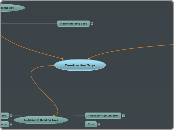a Jeremy Lowe 12 éve
982
Construction Toys
The text delves into the historical and contemporary landscape of educational construction toys and competitive building activities, highlighting their evolution and impact on learning and play.

a Jeremy Lowe 12 éve
982

Még több ilyen
May of 2012, Internet competition heats of with Physics games for children learning to build the most efficient machines.
Catapults, Trebuches, and other war machines have origins dating back to ancient China
1953 Pine wood derby, established by Don Murphy of Manhattan Beach pack 280.
1933, Dayton Ohio, Daily News
Brian Berg at the Venetian Hotel, Vegas
In 1995, a LEGO fan named James Jessiman created LDraw, software designed to generate LEGO part images digitally. Other fans expanded on LDraw, creating new software applications that allowed for entire models to be created digitally.
In 2004, The LEGO Group released their own virtual building software called LEGO Digital Designer, and in 2005 tied this to a new service called LEGO Factory, later renamed LEGO Design byME, which let builders purchase models they built with the software. LEGO Design byME was discontinued in 2011, but LDD continues to receive updates to its interface and parts library.
In 1913, Erector building sets were created by A.C. Gilbert. The first line of Erector building sets started a tradition of including an electric motor in each new model year. It was the first building toy to incorporate electric motors. Meccano followed suit with their own patented electric motor, and third-party manufacturers even produced small steam engines with Meccano branding.
The first plastic building toy was named Bayko after its material, the revolutionary plastic material Bakelite. Detailed injection-molded parts were connected to a plastic base by long metal rods, allowing for the construction of realistic homes and buildings.
Meccano, released by Frank Hornby in 1901, is generally recognized as the first significant metal building toy. It emphasized the construction of working mechanical models.
Occasionally, children who enjoy building toys as children continue that passion as teens or as adults, as a hobby. Building toy manufacturers have responded by creating bigger or more complex construction sets aimed at these markets. Examples that feature greater complexity include Classic K'nex and Lego Technic, while examples of larger models include Lego "Ultimate Collectors Series" and Mega Bloks "Pro Builder".
Boys represent the largest audience for building toys in the modern day. This dates back to the early 1900s, when construction sets were often advertised exclusively to boys and their parents, promising to teach them the technical and motor skills that would aid them in the male-dominated careers of the time. Examples of these types of toys include Tinkertoys and Erector sets. Lego was one of the few companies of the mid-1900s to market to both boys and girls, but even so boys still represent the majority of their audience.
Because of the emphasis on teaching technical skills for a male-dominated workforce, building toys for girls have lagged behind those for boys. Often, when companies have attempted to make building toys for girls, they have done so by introducing versions of existing building toys which are both simplified (like building toys for preschool-age children) and recolored (using traditionally "feminine" colors like pink, purple, and pastels). This tends to continue to this day, although Lego has recently created a highly successful girls theme, Friends, and conceptual products like Goldiebloks are being designed with the intention of eliminating the longstanding gender inequality of building toys.
One of the traditional audiences of building toys. Wooden blocks were often used by children in this age range. Variations on these blocks would remain suitable for children in this age range, like Lincoln Logs and alphabet blocks. Additionally, many more complex building toys often would introduce a variety of their product which was simplified, to make it easier for young children to assemble them, and enlarged, so that they would not create a choking hazard. Examples include Lego Duplo and Mega Bloks Maxi Bloks. Building toys for this audience are often made of materials like wood, plastic, and foam.